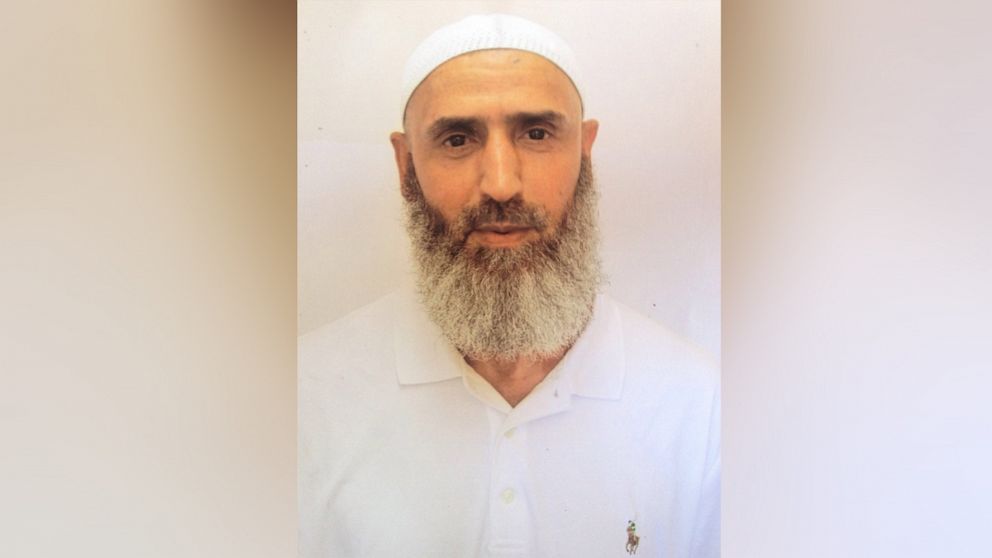‘May never leave Guantanamo alive’: Abdul Latif Nasser’s struggle for freedom 3 years after he was cleared for release
When Mustafa Nasser heard the news that the U.S. authorities had cleared his brother, Abdul Latif, for release from the military prison in Guantanamo Bay, Cuba, he could barely contain his excitement. Within 24 hours preparations were underway for his return.
“The entire family was relieved and was helping with the preparations,” Mustafa, told ABC News via Skype from their home country of Morocco. “Everyone was doing something. One person prepared the house he would live in, another his room.”
The family had even found a potential bride for him to marry upon his return.
Three years have passed since then, and Abdul Latif has still not come home. Instead he languishes in the infamous detention compound where he has been held since 2002 along with 40 remaining prisoners, five of whom, like Abdul Latif, have been cleared for release.
A series of bureaucratic missteps and political reversals mean that each day Abdul Latif – once considered an “enemy combatant” by the U.S. government, but never charged with a crime -- wakes up in the notorious compound, no closer to freedom.
In his brother’s words: “the promise was broken."
Trapped in Guantanamo
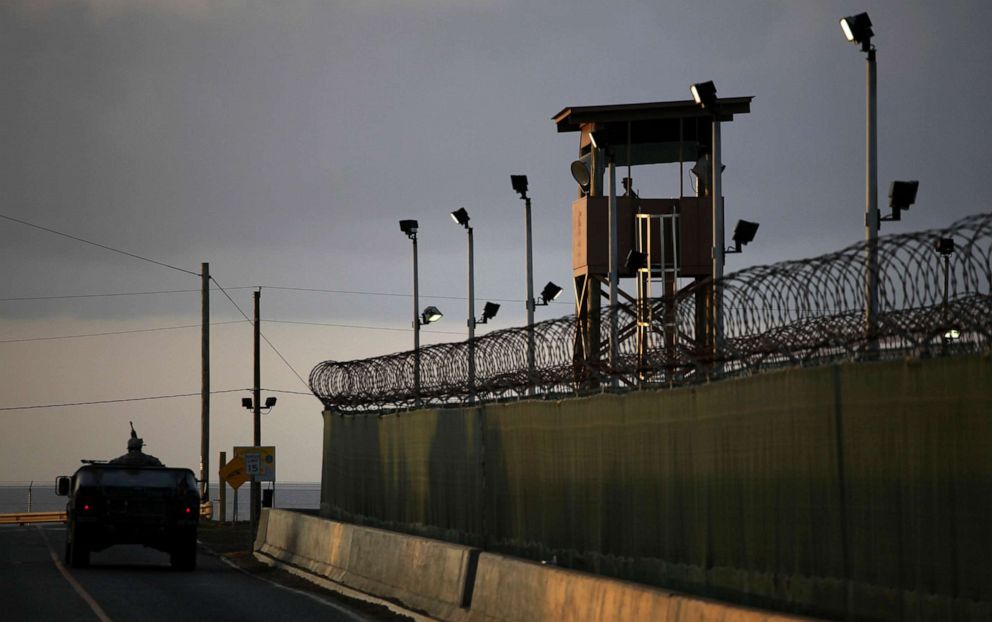
In the late 1980s, Abdul Latif was a chemistry and physics student at Hassan II University in Casablanca.
According to a U.S. Department of Defense memo from 2008 recommending his continued detention (released by WikiLeaks), during his time in high school and college, Abdul Latif was an “active member” of the Islamist group Jamaat al-Adl wa al-Ihssan. Then, he began making frequent trips to Sudan, where, according to the DOD, he met Osama bin Laden in 1995, while working at a charcoal production unit in a company bin Laden owned.
According to the DOD memo, in the late 1990s Abdul Latif became an active member of the Taliban, fighting against the Northern Alliance (which joined forces with the U.S.) for three years and then al-Qaida, where he was an explosives trainer.
Defense officials say he became an “emir” (leader or commander) of Arab fighters after the fall of Kabul. They also say he trained at “multiple al-Qaida training camps, including advanced training in explosives and poisons.”
Abdul Latif, now 54, was captured on Dec. 15, 2001 as part of a group of 52 fighters trying to escape to Pakistan and transferred to American custody in Kandahar on Jan. 21, 2002. He was transferred to Guantanamo Bay on May 3, the document says.
U.S. defense officials alleged in the memo that Abdul Latif was “uncooperative” and provided conflicting accounts of his alleged activities. As such, the DOD deemed him a “high risk” to the U.S. because he would “seek out prior associates and reengage in hostilities and extremist support activities at home and abroad.” The DOD also alleged then that he “has made statements of support for violent terrorist activity.”
They said that his risk from a detention perspective was “medium” because Abdul Latif, who was named an “enemy combatant,” “has non-compliant and hostile to the guard force and staff. Detainee currently has 56 reports of disciplinary infraction listed in DIMS with the most recent occurring on 2 May 2008, when he was reported refusing a random cell search.”
However, the human rights advocacy group Reprieve, which has taken up Abdul Latif’s case, alleges that, based on its intelligence and sources, none of the evidence against their client has ever been presented to a court of law.
The group, along with one of his lawyers, Shelby Sullivan-Bennis, who used to work with Reprieve, but is now in private practice, allege that the Northern Alliance sold Abdul Latif for a bounty to U.S. and that “the testimony of several key witnesses in his case has been discredited,” as the evidence was obtained by “torture,” the group says.
Reprieve cites a 2014 Senate Select Committee on the CIA’s detention program covering the years Abdul Latif was in Guantanamo.
That report, which does not specifically refer to Abdul Latif’s case, concluded that enhanced interrogation techniques used in this period, such as waterboarding, sleep deprivation over a “significant repetition of days,” and forcing detainees to strip naked, were “not an effective means of acquiring intelligence.”
Furthermore, the Senate said that the CIA’s justifications relied on “inaccurate claims of their effectiveness” and the “interrogations of CIA detainees were brutal and far worse” than lawmakers previously thought.
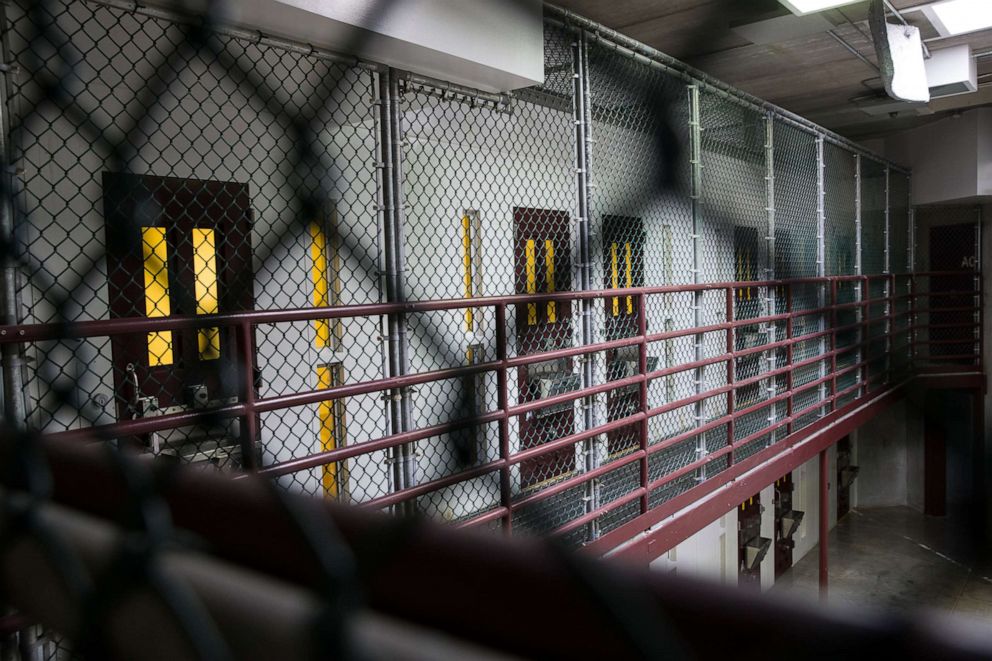
When Abdul Latif’s brother first heard that his brother had been taken to Guantanamo, the news came as “a shock, beyond shocking.”
The family was unable to speak to Abdul Latif until 2004, by which time he had spent two years in solitary confinement, according to Reprieve and his family.
According to Sullivan-Bennis, Abdul Latif’s years in Guantanamo have been particularly grim. She said he was held in isolation between 2009 and 2011 for “having influence over other detainees.”
Between 2006 and 2007, he told her he was kept in Oscar Block, where generators “ran what seemed like 24 hours a day, without cessation, for no discernible purpose other than to make noise.”
The generators “caused permanent hearing damage” and “prevented both thought and sleep from reaching the men to any meaningful degree,” Sullivan-Bennis said.
Adding to the generators were lights that stayed on 24 hours a day. “Shelby, you cannot imagine,” she says Abdul Latif told her of spending days without sleeping, unable to blot out the light with the thin blankets they were provided.
Despite these hardships, Abdul Latif has taken the opportunity to immerse himself in Western culture -- compiling a list of inspirational quotations from prominent writers among other things, his family said.
One of his handwritten notes obtained by ABC News features a quote from Robert Louis Stevenson: “Keep busy at something,” it reads. “A busy person never has time to be unhappy.”And, despite his captivity, it is a philosophy Abdul Latif appears to have lived by.
Abdul Latif spoke no English when he arrived at Guantanamo in 2002, according to Reprieve. Yet he never stopped trying to learn, compiling a 2,000-word Arabic-to-English dictionary, Reprieve said.
Sullivan-Bennis told ABC News that her client “is specifically one of the most outspoken men in Guantanamo with regard to women getting an education and people being able to express their freedom about religion.”
Furthermore, she maintains that Abdul Latif was “never a member of al-Qaida,” and that the state’s version of events is based on evidence that would be inadmissible in a regular, federal court of law. “If he had the same rights that I did, he would probably be free,” Sullivan-Bennis said.
‘Last chance’
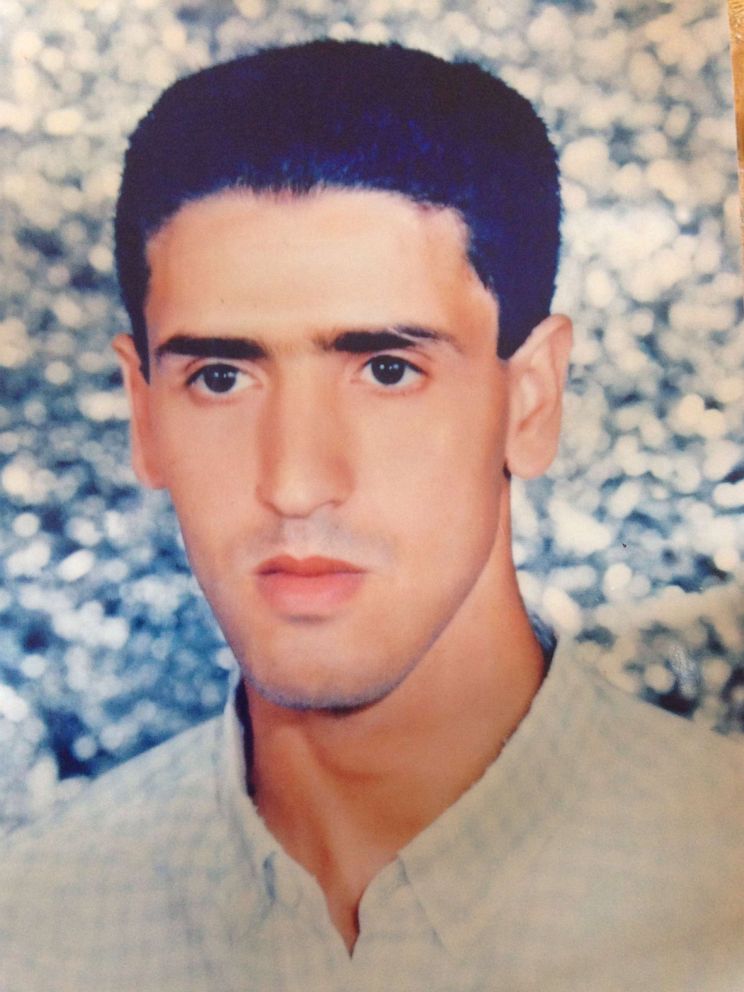
In March 2016, Reprieve received a letter from Abdul Latif saying that he was in “dire need” of assistance. After 14 years in detention without trial, Abdul Latif was due for a hearing before the Periodic Review Board (PRB).
“As my PRB hearing getting closer, I am panicking,” he wrote in the missive. “As you already know this administrative PRB hearing is probably [my] last chance.”
The PRB was set up by the Obama administration in 2011, in order to speed up the process recommending individuals for transfer away from Guantanamo and make good on his promise to close down the facility.
It consists of senior officials from six agencies: the departments of Defense, Justice, Homeland Security, State and representatives from the Chairman of the Joint Chiefs of Staff and Director of National Intelligence. For the PRB to recommend a detainee’s release, all members of the board must agree their detention is no longer justified.
On June 7, 2016, Sullivan-Bennis, made a statement to the PRB arguing that her client was a “compliant” detainee whose exposure to “various cultures” inside Guantanamo allowed him to now “better appreciate others customs and beliefs.”
It said he was a “kind-hearted man” who “seeks only to return to a family that is ready to receive him back.”
“Nasir deeply regrets his actions of the past. I am very confident that Nasir has a strong desire to put this unfortunate period of his life behind him and move on,” she said in the statement. “Nasir has not made any negative comments or expressed any ill will towards the United States nor displayed any evidence of an interest in extremist activities.”
Although the deliberations of the PRB remain classified, Sullivan-Bennis’ testimony appeared to prove persuasive, as on July 16, the board approved her client’s transfer to Morocco, saying that “continued law of war detention of the detainee is no longer necessary to protect against a continuing significant threat to the security of the United States.”

The PRB observed that Abdul Latif had “multiple avenues for support upon transfer” and cited his “renunciation of violence” and “the detainee's efforts to educate himself while at Guantanamo through classes and self-study.”
The board also said that while he presented “some level” of threat, but that it could be “adequately mitigated.”
Yet more than three years later Abdul Latif remains no closer to freedom.
Freedom denied
There are two reasons for Abdul Latif’s continued detention, according to his lawyers – Sullivan-Bennis and Mark Maher, her co-counsel who is with Reprieve.
They say the first was a bureaucratic mishap.
Although the PRB made its recommendation on July 16, 2016, any detainee’s transfer is dependent on the host country’s willingness to agree to the security terms of his release. After this occurs, the Department of Defense must then issue a notice to Congress, expressing their intention to transfer the detainee.
Sullivan-Bennis told ABC News that based on her knowledge at the time, the Moroccan government was ready to receive him, and that during various conversations with the State Department, “I was told over and over again after his clearance he will go back to Morocco.”
However, the Moroccan government did not accept the security terms set out by the PRB, and thus responsibility for the transfer, until Dec. 28, 2018. That delay, thanks to what happened next, was crucial.
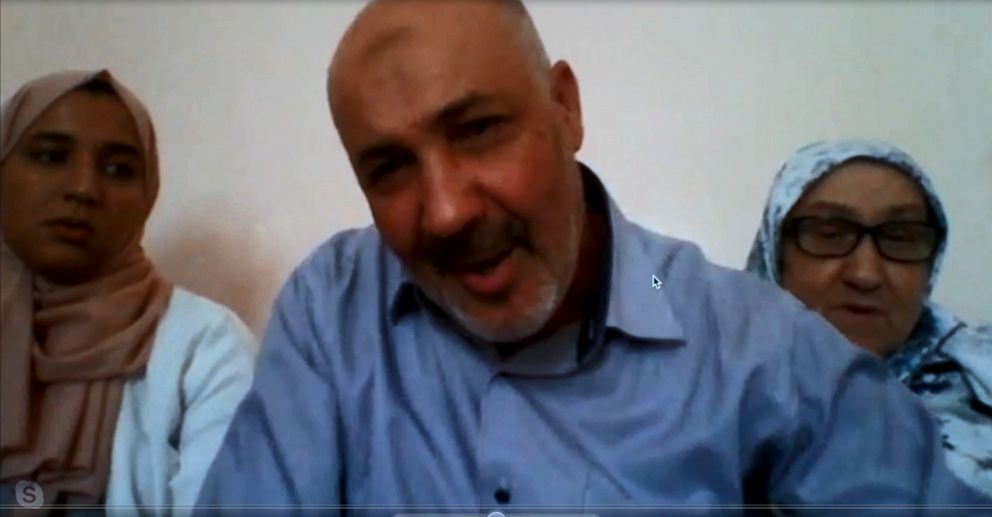
The second factor was what Abdul Latif’s legal team calls a pivotal policy reversal. On Jan. 3, 2017, Donald Trump, the incoming president of the United States, tweeted that there “should be no further releases from Gitmo.”
According to an opinion on an emergency motion filed by his lawyers in Washington, DC 10 days later, the outgoing secretary of defense, Ash Carter, had left the task of notifying Congress to his successor, Jim Mattis.
On Jan. 19, United States District Judge Colleen Kollar-Kotelly rejected the motion.
“The decision to transfer Petitioner pursuant to a recommendation of the PRB rests exclusively within the discretion of the Secretary of Defense,” the judge ruled. “Petitioner has no ‘right’ to such a transfer.”
The notification to Congress was never issued. Just days from release, Nasir’s freedom had been snatched from him once again.
Guantanamo Bay today: ‘Like a ghost town’
In total, roughly 780 people have been detained at Guantanamo Bay since the detention compound was first established under the Bush administration in 2002, and it held nearly 700 detainees at its peak in summer 2003 according to The Associated Press.
The vast majority of those, 532, were released under President George W. Bush, who said “it should be a goal of the [United States] to shut down Guantanamo.”
Now, only 40 remain, according to the American Civil Liberties Union, and the atmosphere has changed with it.
Under President Obama, 197 prisoners were transferred from Guantanamo. Of the 64 inmates whose cases were reviewed by the PRB, only 38 were approved for transfer, according to a habeas corpus court petition (challenging detention) from 11 men detained there without charge or trial, “many of them for nearly 15 years or more,” including Abdul Latif and senior al-Qaida operative Abu Zubaydah.
By contrast just one man, Mohammad Ahmed Haza al-Dabi, has been released from Guantanamo under Trump, thanks to a pre-existing plea deal with his home country, Saudi Arabia.
Once a full and active military prison, the majority of the detainees left are over the age of 50, and much of the actual prison lies unused.
“A lot of the blocks are actually empty,” Sullivan-Bennis said. “So it's a ghost town. There are only 24 low value detainees who are kept kind of in any kind of communal living situation.”
‘May never leave Guantanamo alive’

Trump’s January 2017 tweet plays a major part in Abdul Latif’s 2018 petition for habeas corpus. The document describes the tweet as an illegal U-turn in the governmental approach to Guantanamo, “driven by executive hubris and raw animus rather than by reason.”
“Given President Donald Trump’s proclamation against releasing any petitioners – driven by executive hubris and raw animus rather than by reason or deliberative national security concerns – these petitioners may never leave Guantanamo alive, absent judicial intervention,” the document says.
The document argues that many of the remaining detainees “are suffering the devastating psychological and physiological consequences of indefinite detention in a remote prison camp where they have endured conditions devised to break human beings, and where the aura of forever hangs heavier than ever.”
“Medical experts liken prolonged indefinite detention to sensory deprivation – a recognized form of psychological torture,” the document adds. “Their experience now is of being stranded.”
In its argument against the petition, a lawyer for the government, Ronald Wiltsie, said “being cleared for transfer or proposed for transfer in no way indicates they are no longer a threat to the United States.”
Wiltsie also said that “the policies and practices under the executive order are deliberative right now; that we – it is hoped that the – that transfers may occur in the future, but we are not currently,” denying that there was a ban on transfers.
And he said the government was making “prudent efforts to care for” the remaining detainees. “It is quite likely that some of them will be transferred in the future,” he added.
Detainees did not have the constitutional right to challenge their detention until 2008, when the Supreme Court ruled by 5-4 that detainees had a right to an attorney, invalidating portions of the Military Commissions Act of 2006.
However, as many of them have not been charged with a crime, they have no right to a criminal appeal of their cases, and instead must resort to civil proceedings such as habeas corpus.
Like 31 of the 40 detainees in Guantanamo, Abdul Latif has not been charged with a crime. Of those remaining, he and four others have been cleared for release by the PRB, according to the habeas corpus petition. They all live in a judicial limbo, first promised freedom and then forgotten by an administration determined to keep them detained, without releasing evidence as to why.
Federal judges ultimately have oversight over Guantanamo rulings, Eric Freedman, a professor of constitutional rights at Hofstra University, told ABC News. Yet the rulings of the PRB, the kind that cleared Abdul Latif for release, are not legally binding, Freedman said.
The PRB process had been “frozen” under Trump, and that “administration policy is that no one is to be released, regardless of the evidence.”
However, due to “a torrent of professional criticism,” Freedman said the D.C. courts are beginning to “assert their proper role” with regards to detainees – which offers some hope for the habeas corpus petitioners awaiting their verdict.
The hope, Sullivan-Bennis said, is that even if Abdul Latif will not be released, more of the evidence used against him will be declassified in order for the defense to attempt to build a stronger case.
It’s not clear when a judge will rule on the habeas petition, but the last time arguments were heard between the petitioners and the state’s lawyers, a chilling legal possibility was brought to the fore.
The government’s lawyers argued that, under the laws of war, which apply while conflict with the Taliban and al Qaeda are ongoing, the detainees could remain in Guantanamo for the next 100 years.
"What we are seeing under Donald Trump's administration is an undeclared - and unconstitutional - policy of indefinite detention without trial,” Maher, Abdul Latif’s co-counsel, told ABC News. “Any one of six US agencies [in the PRB] could have vetoed his transfer, but they agreed unanimously he should be released from Guantanamo.
The Department of Defense have said there is no public update regarding the movement of Abdul Latif.
“The decision to transfer a detainee is made only after detailed, specific conversations with the receiving country about the potential threat a detainee may pose after transfer and the measures the receiving country will take in order to sufficiently mitigate that threat, and to ensure humane treatment,” a Department of Defense spokesperson told ABC News.
“The measures taken must be tailored to mitigate the specific threat that the detainee may pose. If we do not receive adequate assurances, the transfer does not occur. We must also ensure that the transfer can be effectuated consistent with our post-transfer humane treatment policy. All detainees have the right to challenge the lawfulness of their detention in federal district court.”
Morocco, for its part, has “abandoned” Abdul Latif, according to a foreign ministry official familiar with the case. “Morocco did not stand for Nasir case even if a rehabilitation program was ready for him in Morocco."
A new court date has not been scheduled.
Despite having being promised return to his home country over three years ago, each day Abdul Latif – who eventually would like to work in computer science -- wakes up in Guantanamo Bay.
The frustration is unbearable, he said.
As he asked in a June 2018 meeting with Reprieve lawyers: “Why do I have to stay here?”
The answer to that question, and his own freedom, now lies in the hands of the judges in Washington D.C.
